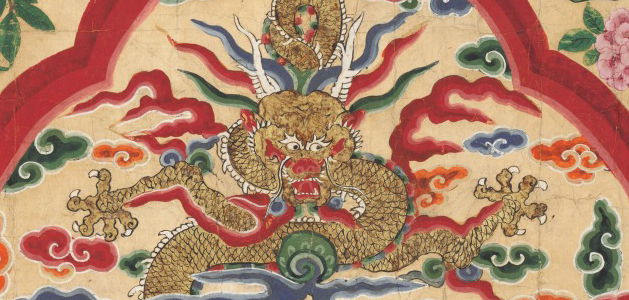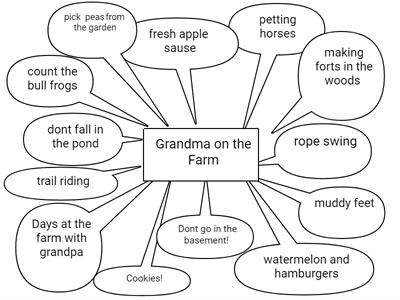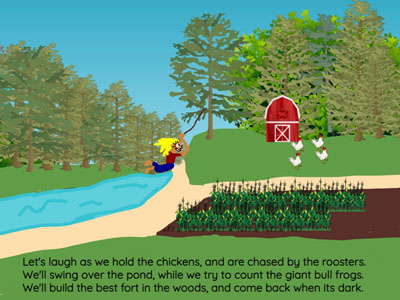
After reading sijo poems and learning about this form of Korean poetry similar to haiku, students will write and illustrate their own sijo poems.

Writing poetry can help make you a great author. Sijo poems, like haiku, are short and require careful word choice. Show off your vocabulary skills by writing and illustrating your own sijo poem.
The Sijo form of poetry started in the 14th century in Korea and began as short songs that were sung accompanied by drums.
Sijo is written as three lines with 14-16 syllables in each line. Each line has a break, where the reader or speaker pause, although this pause does not have to be in the exact middle of each line. Because of this pause, sijo poems written in English are often six lines.
Due to their short length, sijo poems are an ideal writing format for hesitant writers and/or students with a language barrier. Writing sijo is also a great exercise in concise, purposeful word choice, which often prompts rich vocabulary discussions, as students debate the author’s word choice and explore multiple meanings and nuance.
To engage your students in this poetry form, read Linda Sue Park’s Tap Dancing On The Roof: Sijo.
Share an example or two of a traditional sijo poem, such as Yun Son-do's “The Fisherman’s Calendar”:
Sijo are also written as a story. The first line, or cho-jang, introduces the scene. The second line, or jung-jang turns the initial idea in a new direction. The third line, or jong-jang, begins with a fun twist or play on words and sounds and ends with a conclusion to the story.
Review the key elements of the sijo form with your students. You may want to create an anchor chart together so they have a visual they can refer to independently as they are working.
Have each student begin by choosing a scene for their poem. This scene could be:
Have students use a cluster diagram to identify details for this scene they can use to identify and characterize the moment they are sharing in their sijo poem. For example, what do they see, hear, or feel?

Have students review their descriptions to help them envision the scene and choose a theme for the poem. What story is their sijo poem trying to tell?
Have students use the descriptive words as inspiration for the first line of the poem, showcasing the setting and the mood. Be sure students remember to include a pause between the two ideas they are sharing in line one.
“Our word choices give a sentence its luster, and they deserve intense attention." --Constance Hale
The second line should include some sort of action. What is happening at this moment in this location? The word choice in this line should reflect the theme and include a pause.
The third line is the conclusion to the event or story.
Master sijo writers include a “twist” in lines two or three. A great sijo sets up the reader so that they assume the poem is going in one direction, but instead takes a turn. This can be a joke, a surprise, or just a subtle shift to something unexpected.

Have students share the first draft of their sijo with another student. Student reviewers should also highlight or underline words and phrases that they feel do an excellent job connecting the reader to the meaning of the poem. The intention is to prompt close reading, explanations, and clarifications that the authors can use to improve their poem.
Once students have finished editing their sijo, have them use pencils and crayons, or a digital tool like Wixie, to type their sijo and create supporting illustrations using the paint tools, photographs, and clip art.
Students should also record themselves reading their sijo for intonation, correct pauses, and effect. This is a great opportunity for students to practice reading with commas, providing an opportunity to both see and hear how the comma represents the break in ideas and the pause in speaking.
Print each student’s sijo page in color to display in your classroom. Reach out to a local tea shop or even small business to see if they might be interested in showcasing student work at their site.They might even be willing to host a sijo poetry reading night for family and community members.
You can also combine student poems in a class book. Print individual pages and bind them into a book you can share in your library or school media center. Many photo sharing sites let you easily print coffee-table style books; simply use a camera to capture, or your digital publishing tool to export each student’s page as a JPG. Then upload to a photo sharing site and choose your print options.
Evaluate prior knowledge about haiku as poetry form as you read sijo poems with your class. Evaluate their understanding of syllables as you clap and read the sijo, as well as in one-on-one conversations as students are writing. You will be able to use these conversations to get a sense of the size of a student’s vocabulary and word choice writing skills.
Create and share a checklist or rubric to clarify your expectations for their work.
Linda Sue Park. Tap Dancing On The Roof: Sijo. ISBN: 0544555511
Linda Miss Anna. Sijo Shijo Goshijo: The Beloved Classics of Korean Poetry.. ISBN: 0544555511
Sung-il Lee. The Crane in the Clouds: Shijo: Korean Classical Poems in the Vernacular.. ISBN: 1931907927
Sijo in the Light - Sijo Blossoms
CCSS.ELA-LITERACY.W.3.3
Write narratives to develop real or imagined experiences or events using effective technique, descriptive details, and clear event sequences.
CCSS.ELA-LITERACY.W.3.4
With guidance and support from adults, produce writing in which the development and organization are appropriate to task and purpose.
CCSS.ELA-LITERACY.W.3.5
With guidance and support from peers and adults, develop and strengthen writing as needed by planning, revising, and editing.
CCSS.ELA-LITERACY.W.3.6
With guidance and support from adults, use technology to produce and publish writing (using keyboarding skills) as well as to interact and collaborate with others.
CCSS.ELA-LITERACY.SL.3.5
Create engaging audio recordings of stories or poems that demonstrate fluid reading at an understandable pace; add visual displays when appropriate to emphasize or enhance certain facts or details.
CCSS.ELA-LITERACY.L.3.3.A
Choose words and phrases for effect.
CCSS.ELA-LITERACY.W.4.3
Write narratives to develop real or imagined experiences or events using effective technique, descriptive details, and clear event sequences.
CCSS.ELA-LITERACY.W.4.3.D
Use concrete words and phrases and sensory details to convey experiences and events precisely.
CCSS.ELA-LITERACY.W.4.4
Produce clear and coherent writing in which the development and organization are appropriate to task, purpose, and audience.
CCSS.ELA-LITERACY.W.4.5
With guidance and support from peers and adults, develop and strengthen writing as needed by planning, revising, and editing.
CCSS.ELA-LITERACY.SL.4.5
Add audio recordings and visual displays to presentations when appropriate to enhance the development of main ideas or themes.
CCSS.ELA-LITERACY.L.4.3.A
Choose words and phrases to convey ideas precisely.
CCSS.ELA-LITERACY.W.5.3
Write narratives to develop real or imagined experiences or events using effective technique, descriptive details, and clear event sequences.
CCSS.ELA-LITERACY.W.5.4
Produce clear and coherent writing in which the development and organization are appropriate to task, purpose, and audience.
CCSS.ELA-LITERACY.SL.5.5
Include multimedia components (e.g., graphics, sound) and visual displays in presentations when appropriate to enhance the development of main ideas or themes.
CCSS.ELA-LITERACY.W.6.3
Write narratives to develop real or imagined experiences or events using effective technique, relevant descriptive details, and well-structured event sequences.
CCSS.ELA-LITERACY.W.6.3.D
Use precise words and phrases, relevant descriptive details, and sensory language to convey experiences and events.
CCSS.ELA-LITERACY.W.6.4
Produce clear and coherent writing in which the development, organization, and style are appropriate to task, purpose, and audience.
CCSS.ELA-LITERACY.SL.6.5
Include multimedia components (e.g., graphics, images, music, sound) and visual displays in presentations to clarify information.
6. Creative Communicator
Students communicate clearly and express themselves creatively for a variety of purposes using the platforms, tools, styles, formats and digital media appropriate to their goals. Students:
a. choose the appropriate platforms and tools for meeting the desired objectives of their creation or communication.
b. create original works or responsibly repurpose or remix digital resources into new creations.
d. publish or present content that customizes the message and medium for their intended audiences.

Follow us on Instagram for daily inspiration

Create a thought web, cluster, flowchart, or other graphic organizer for a lesson
Five ideas for creative classroom centers
Creative, digital book reviews
Fun and powerful ideas with animated characters

Wixie
Share your ideas, imagination, and understanding through writing, art, voice, and video.

Rubric Maker
Create custom rubrics for your classroom.

Pics4Learning
A curated, copyright-friendly image library that is safe and free for education.

Wriddle
Write, record, and illustrate a sentence.

Get creative classroom ideas delivered straight to your inbox once a month.
Topics